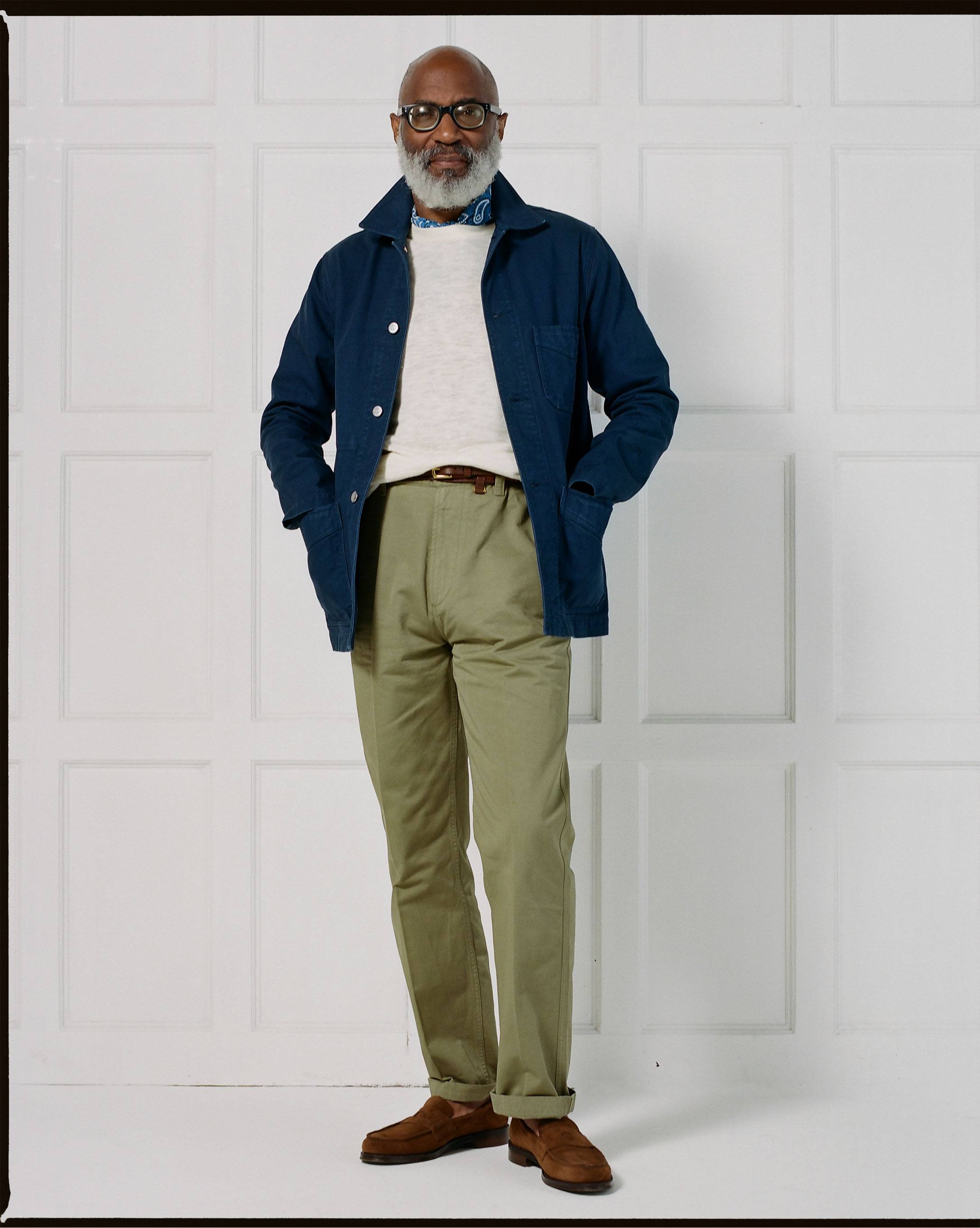A Brief (and Actually Interesting) History of the Chino
By Charlie Teasdale
2022년 7월 13일

The new Drake's chino is a trouser for all seasons and eventualities, our vision of an Ivy and Americana classic. Available in five colours, it's made from Italian cotton with a high rise, a flat front and regular shape that tapers ever so slightly past the knee. To celebrate its launch, we asked our friend Charlie Teasdale, the Style Director at Esquire, to impart a bit of wisdom and a brief and interesting backstory on the chino.
There are some words and phrases that get menswear dudes’ nerves a-janglin’. Any mention of ‘fresco wool’, for example, or “roped sleeveheads”, or when the word “soldes” appears anyway near the word “Paraboot”. But wander down Savile Row bleating the word “chinos” and you likely won’t get a ripple. Chinos are about as quintessentially manly as clothes can get, offering solace from sartorial indecision, supreme comfort and levity in warmer climes, as well as the requisite smartness when an event calls for small-casual clothes. But despite chinos’ humble, workhorse-like virtues, they are oft overlooked in the style stakes, and I’m here to insist that you look again.
Like with much of the menswear canon – perhaps more than we Brits care to admit – the origin story of the chino trouser begins in the US. The story goes that during the Spanish-American War, American armed forces stationed in the Philippines wore trousers cut from light, tough Chinese cotton twill, which they colloquially dubbed “chinos”. In that moment, the die was somewhat cast, and the humble chino would forever be known defined as what it is: smart enough for parade and tough enough for war.



Incidentally, “Khakis”, another word Americans use to refer to chinos, generally of that classic shade of beige, get their name from British office Sir Harry Lumsden, who allegedly used a mix of coffee, curry and mulberries to stain his white uniform to a colour that better camouflaged against the Indian landscape. (“Khaki” is the Indian word for “dust”.)
The military is responsible for most of the silhouettes of classic menswear – short-body blousons; greatcoats, cargo pants etc. – but the chino was deftly reappropriated by the Ivy League dressers of the American Mid-Century. In books like Teruyoshi Hayashida’s hallowed style bible 'Take Ivy' (2010) or this year’s 'Black Ivy: A Revolt in Style' by Jason Jules and Graham March, most of the fellas wafting around their east-coast campuses are doing so in Oxford button downs, beaten-up penny loafers (with white socks) and slim, slightly cropped, party-worn chinos. It was perhaps the first-time chinos materialised in their contemporary iteration – that of a comfortable trouser that was smarter than jeans and less stuffy than wool trousers. (And worth remembering that Ivy style is not the same as preppy style – the latter is a more stylised, sporty, garish derivative of the latter, in my humble opinion. If unsure, consult the aforementioned books.)


In a slightly ironic turn of events, the trouser that helped define a youthful alternative to ‘smart’ dress then became so ubiquitous that its original youthful, cool energy was gradually usurped by dependability and malleability. By the end of the 20th Century, chinos had been boiled down to the trousers men wore to work on Fridays. But that was and is a travesty, because the chino trouser – that is to say, separate trousers cut from matte, mid-weight cotton twill – has never changed, and nor have its many sartorial virtues.
For wedding season ’22 – and beyond - I predict and promote an era of “broken” tailoring that will chaperone us out of the doldrums of lockdown dressing. Suiting is a beautiful, elegant, transcendent thing, but would you consider pairing that hopsack blazer with a pair of slim-cut chinos in a close-but-not-identical shade? You should, because it offers a textural nuance that few other combinations can muster. Or what about beige khakis with a printed camp collar shirt and a crew neck white Tee? Very Yale ’68, and very now, too.
Elsewhere, it might be an overstatement to say that a revival of Ivy style was in full swing, but we are currently witnessing a convergence of Nineties Americana, English heritage sportswear and loafer supremacy which allows the chino to reclaim its place at the centre of the Venn diagram of good menswear once again.
Welcome back, old sport.


